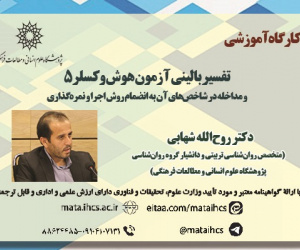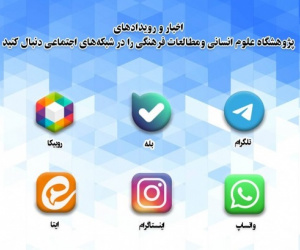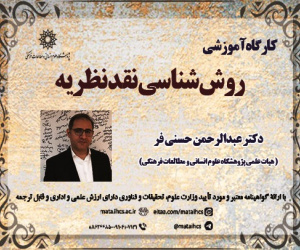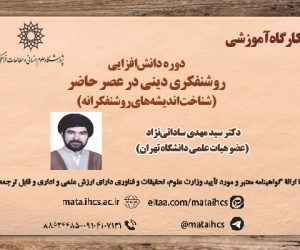شناسایی و سطح بندی موانع تفکّر انتقادی مبتنی بر فرهنگ مطالعه در نوجوانان (مقاله علمی وزارت علوم)
درجه علمی: نشریه علمی (وزارت علوم)
آرشیو
چکیده
پژوهش حاضر با هدف شناسایی و سطح بندی موانع تفکر انتقادی مبتنی بر فرهنگ مطالعه در نوجوانان انجام شد. این تحقیق به صورت آمیخته اکتشافی و با رویکرد کیفی-کمی صورت گرفت. در بخش کیفی، ابعاد، مؤلفه ها و شاخص های تحقیق با بکارگیری تحلیل مضمون نرم افزار مکس کیودا (2018) و با توجه به مبانی نظری و نظر خبرگان استخراج شد. سپس سطح بندی عوامل با روش ساختاری-تفسیری (ISM) صورت گرفت. نتایج نشان می دهد که ابعاد تحقیق شامل: ویژگی های شخصیتی، خصوصیات روانشناختی، ارزش های ذاتی، فرهنگ مدارس، مشکلات اقتصادی می باشد و مولفه ها شامل: ارزش های محوری، ریسک گریزی، فردمحوری، تعصب فکری، عدم انعطاف پذیری، عدم تمرکز، پذیرش تفکر انتقادی، عدم تحمل ابهام، ضعف مهارت های تفکر انتقادی، عدم نیازسنجی آموزشی، عدم وجود جو حامی تفکر انتقادی، ارزش های محوری مدرسه، درآمد و سرانه پایین خانواده ها و مدارس می باشد. همچنین سطح بندی مدل پژوهش نشان داد که کدهای محوری ریسک گریزی، فردمحوری، تعصب فکری، عدم انعطاف پذیری، عدم تمرکز، پذیرش تفکر انتقادی، عدم تحمل ابهام، ضعف مهارت های تفکر انتقادی، عدم وجود جو حامی تفکر انتقادی و درآمد و سرانه پایین مدارس در سطح اول می باشند. همچنین کدهای محوری درآمد و سرانه پایین خانواده ها و ارزش های محوری مدرسه در سطح دوم؛ ارزش های محوری و عدم نیازسنجی آموزشی به ترتیب در سطح سوم و چهارم می باشند.Identifying and Leveling the Barriers of Critical Thinking Based on Study Culture in Teenagers
This study aims to identify and rank barriers to critical thinking based on adolescents' reading culture. Using an exploratory mixed-methods approach, it employed qualitative-quantitative methods. First, thematic analysis with MAXQDA software (2018) helped extract the dimensions, components, and indicators of critical thinking barriers, based on theoretical frameworks and expert opinions. The factors were then ranked using the Interpretive Structural Modeling. Results reveal that the study’s dimensions include personality traits, psychological characteristics, intrinsic values, school culture, and economic challenges. Key components are core values, risk aversion, individualism, cognitive bias, inflexibility, lack of focus, acceptance of critical thinking, intolerance of ambiguity, weak critical thinking skills, lack of educational needs assessment, lack of a supportive environment for critical thinking, school core values, and low family and school funding per capita. The ranking model shows that the primary barriers—risk aversion, individualism, cognitive bias, inflexibility, lack of focus, acceptance of critical thinking, intolerance of ambiguity, weak critical thinking skills, lack of a supportive environment, and low school funding—are positioned at the first level. Family income per capita and core school values occupy the second level, while core values and the lack of educational needs assessment rank at the third and fourth levels, respectively. Keywords: Critical Thinking, Study Culture, Identification and Leveling, Teenagers, Interpretive Structural Modeling (ISM) Introduction One of the issues that has consistently occupied the minds of thinkers throughout history is "thinking." Experts have identified various aspects of thinking, one of which is critical or evaluative thinking. In the realm of education, attention to thinking holds greater significance because the ultimate aim of education is to enable individuals to engage in clear and logical thinking and constructive thought, allowing them to address the problems and challenges of life and to organize past experiences to draw conclusions for future success. In this context, students equipped with critical thinking skills can apply their scientific knowledge effectively and bring it into practice. Today, educational approaches are more inclined towards critical thinking than ever before; reliance on memory and the mere use of memorized information in the educational system has diminished. Instead, the ability of students to analyze, evaluate, and interpret information has garnered considerable attention. Research findings in the fields of thinking and problem-solving indicate that the implementation of teaching thinking and problem-solving significantly impacts students’ progress and performance. Therefore, thinking activities should be regarded as an integral part of daily education across all subjects. Based on the findings, we can conclude that teaching thinking and problem-solving has a positive correlation with students' academic achievement. Consequently, the educational system should focus on creating opportunities to cultivate the thinking skills of adolescents rather than simply transferring information through textbook content. Moreover, appropriate, precise, and purposeful study must also be considered. Those who acquire the necessary skills in studying are able to express their opinions confidently and are never apprehensive about articulating their thoughts. They can explain their issues without error or hesitation, which prevents frustration in social settings and lays the groundwork for their success and happiness. Therefore, the goal of this research is to identify and rank the barriers to critical thinking based on a culture of study among adolescents. Materials and methods This study is applied in terms of its objectives and falls within the realm of descriptive studies in terms of its nature. The research method is based on a mixed approach, e







